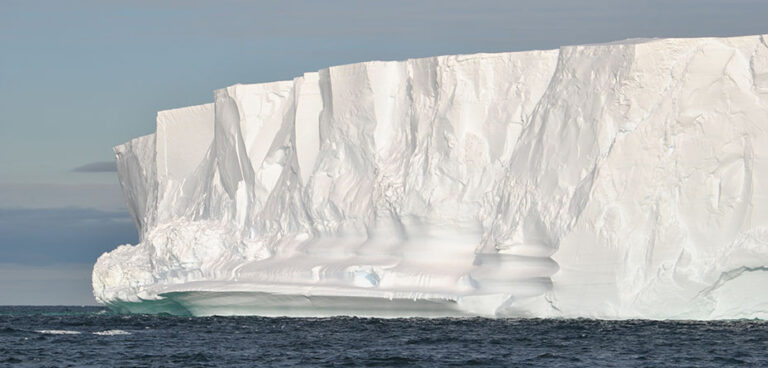Inland Antarctic ice has water that can raise global sea levels by several meters, according to a study that says that an ice wall is vital to prevent rising ocean temperatures.
The ocean can store more heat than the atmosphere, with the deep sea around Antarctica storing thermal energy equal to the heating of the air above the continent by 400°.
A Swedish-led international research group has explored the physics behind the ocean currents close to the floating glaciers.
Anna Wahlin, lead author of the study and professor of oceanography at the University of Gothenburg, said measurements indicate melting around the coast of Antarctica and Greenland.
“These increases can likely be linked to the warm, salty ocean currents that circulate on the continental shelf, melting the ice from below,” Wahlin said.
Celine Heuze, climate researcher at the Department of Earth Sciences of the University of Gothenburg, added that ice shelves are their own best protection against warm water.
“If the ice thins, more oceanic heat comes in and melts the ice shelf, which becomes even thinner etc. It is worrying, as the ice shelves are already thinning because of global air and ocean warming,” she said.
The stability of Antarctic ice, and why it could melt faster, is a mystery, and since glaciers are difficult to access, researchers have struggled to get information.
Knowledge has been obtained from studying measurement data collected from instruments placed in the ocean around the Getz glacier.
It has a floating section around 300-800m thick, beneath which there is seawater that connects to the ocean beyond.
Wahlin said, “Studying the measurement data from the instruments, we found that the ocean currents are blocked by the ice edge. This limits the extent to which the warm water can reach the continent.”
Wahlin added that measurements correspond with melting ice being measured by satellites.
“This also means that the floating glaciers – the ice fronts in particular – are key areas that should be closely monitored. If the ice walls were to disappear, much greater levels of thermal energy would be released towards the ice on land,” she said.



